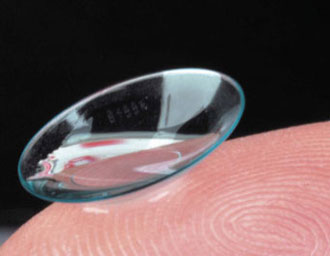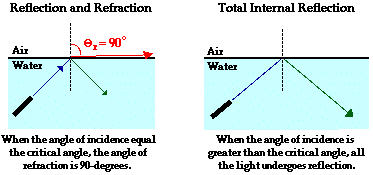...this title makes sense if you think about it.
In today's class, Mr. Banow set up four stations, each concerning a topic relating to eye correction:
- Contact Lenses
- Eye Glasses
- Artificial Lenses
- LASIK - Laser Eye Surgery
Contact Lenses
Contact Lenses are thin, transparent discs that sit on the cornea that can correct hyperopia  (far-sightedness), myopia (near-sightedness), astigmatism, and presbyopia.
(far-sightedness), myopia (near-sightedness), astigmatism, and presbyopia.
There are many different kinds of contact lenses, each with a different function. The six different types are daily-wear, extended-wear, disposable, colour-tinted, UV protection, and corneal reshaping.
Eye Glasses
Eye glasses are lenses that are attached to a  frame. There are several different type of glasses:
frame. There are several different type of glasses:
- Corrective - changes the focal length in order to correct defects such as myopia or hyperopia
- Bifocal - allows for two different focal lengths so one can see near and far objects; the division is clearly visible
- Trifocal - similar to bifocal lenses, but with three different focal lengths
- Progressive - similar to bifocal, but the division is not visible as the lens is gradually changed
- Safety - used to protect the eye from physical damage
- Sunglasses - protects the eye from UV radiation
- Special - used for special functions, such as 3D red-cyan anaglyph glasses
Glasses are also made out of many different materials, such as crown glass, plastic, polycarbonate, Trivex, and high-index plastic. The material is chosen based on what the glasses are used for.
The lenses are either converging lenses (to treat myopia) or diverging lenses (to treat hyperopia).
The different types of lenses.
Artificial Lenses
Artificial lenses are replacement lenses for your eye. The two types are intraocular lens (IOL) and Crystalens. The Crystalens is considered to be superior because it can be manipulated by the ciliary muscles, but it costs more and requires a more intensive surgery.
LASIK - Laser Eye Surgery
LASIK is a medical surgery used to correct hyperopia, myopia, and astigmatism. A laser is pulsed on an exposed cornea, removing corneal tissue, therefore, reshaping it.
Procedure of LASIK:
- Make an incision in the cornea to make a flap
- Fold the flap back to expose the cornea
- A laser is pulsed at the exposed cornea
- The flap is replaced and any wrinkles or bubbles are smoothed
The surgery itself will only take a few minutes. The cornea will naturally seal back into place in a few hours and will completely heal in a matter of days.
At the end of class, we were instructed to watch a video from the Mythbusters Pirate Special. It can be found
here if you have not already seen it.
The next blog will be written by whoever can figure out the title first!





 This telescope uses three converging lenses, the third lens located in the middle (erector lens) has the purpose of inverting the image so it is upright like the object. Images produced are virtual, upright and larger.
This telescope uses three converging lenses, the third lens located in the middle (erector lens) has the purpose of inverting the image so it is upright like the object. Images produced are virtual, upright and larger. 













































